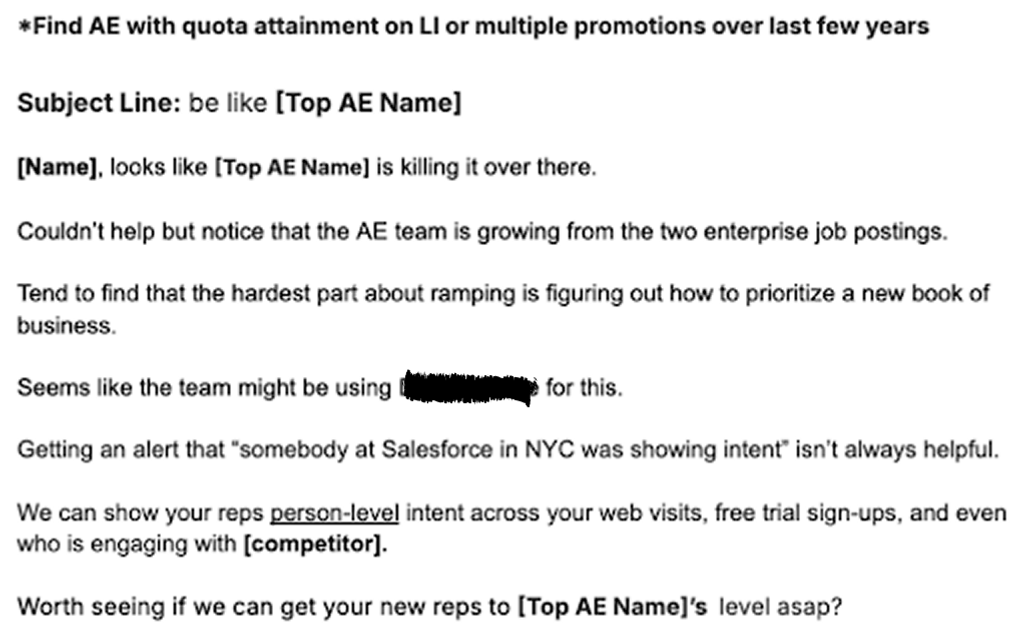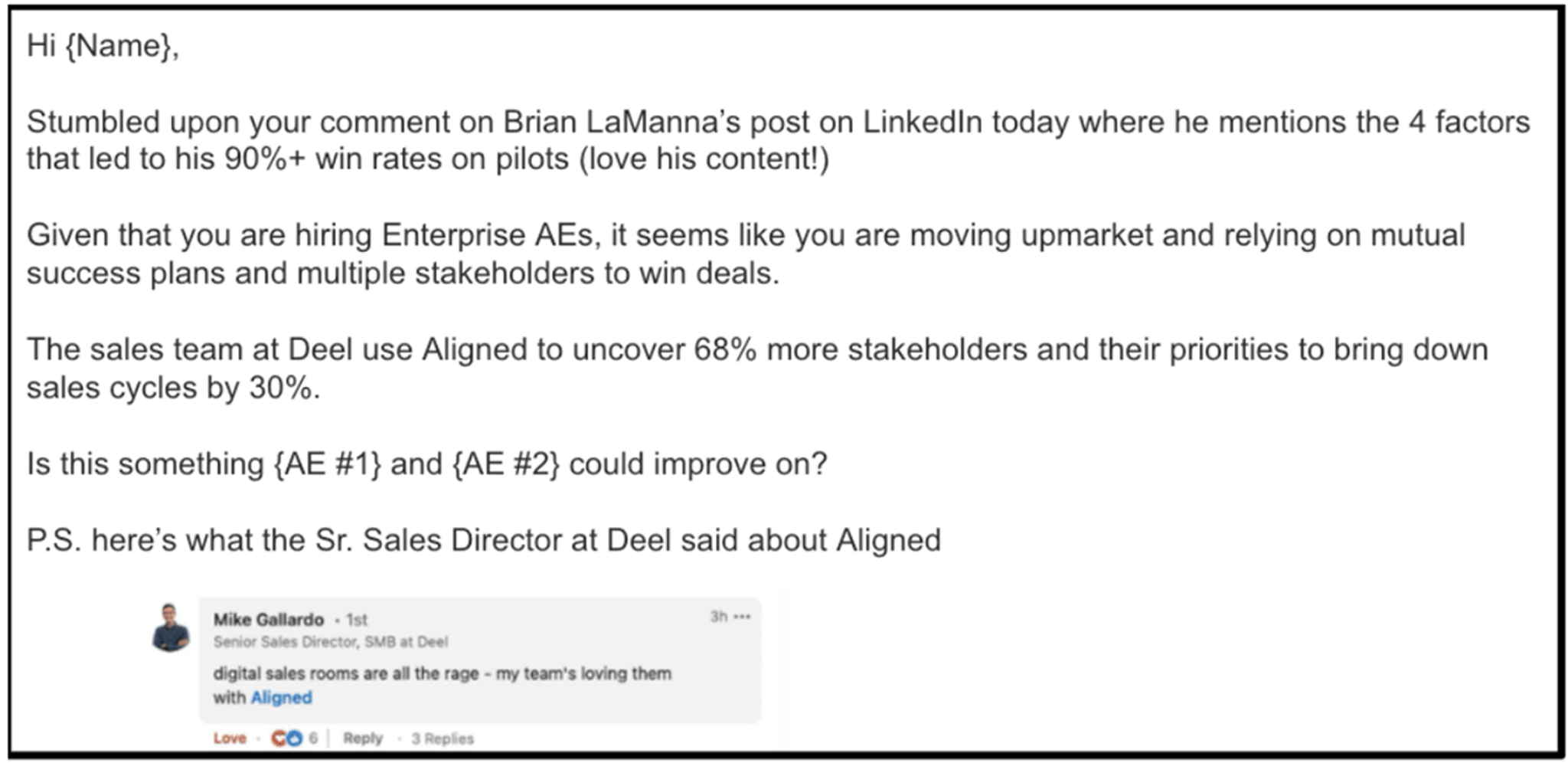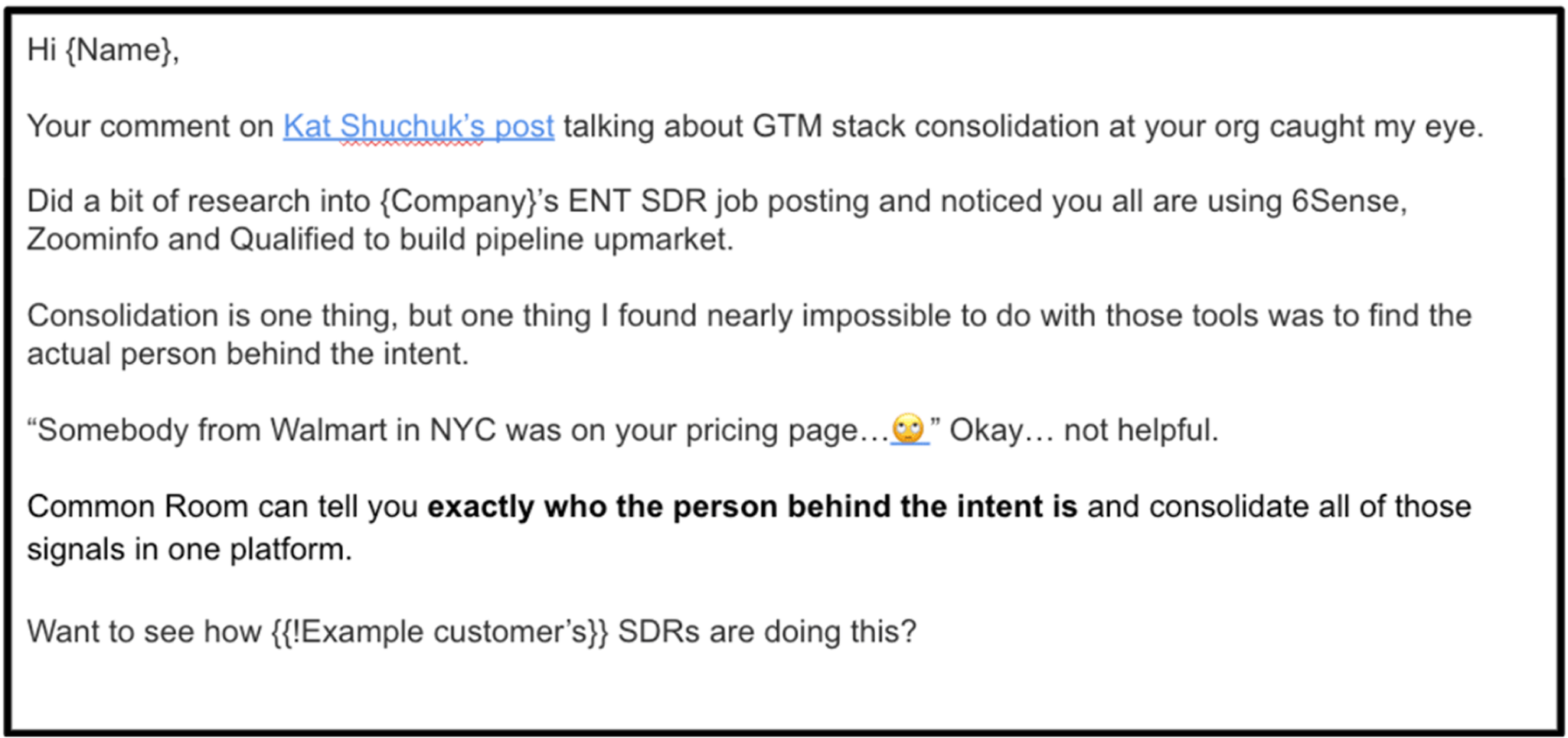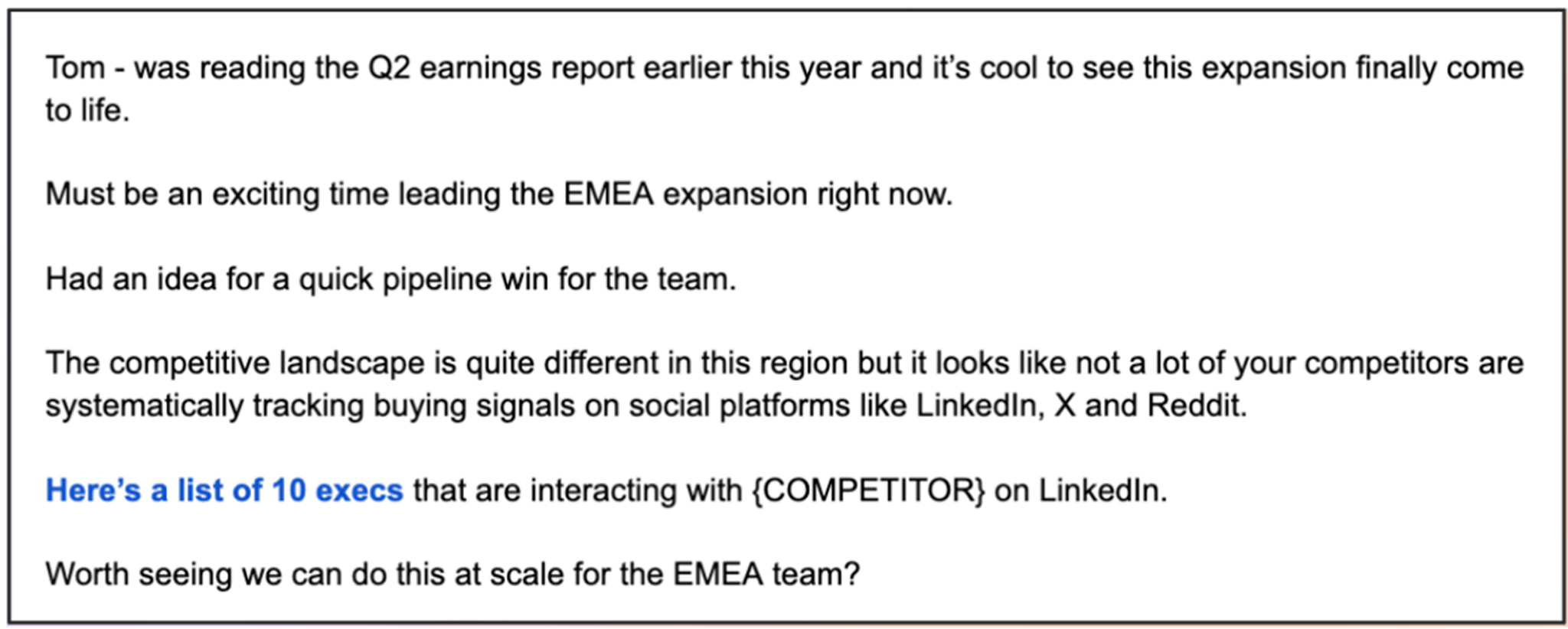A version of this article was originally published by 30 Minutes to President’s Club.
There’s a lot of buzz around signals, buying intent, and AI account research right now.
Why? Because most sales reps still treat outbound like a timing lottery. They blast the same generic message across 100 accounts and hope they get lucky.
But the best outbound reps book more meetings in fewer touchpoints by finding the right account, the right person, and sending the right message—at the right time.
Although the tech to detect these signals and research accounts at scale has become much better, using signals (or what I used to call triggers) is not new.
Signals have been around forever and I’ll show you my three favorite signals you can use even if you don’t have a fancy tech stack:
- Job listing signals
- Social engagement signals
- Job-change signals
I’ll also give you personalized messaging to use for each of these signals. Let’s get into it!
1: Job listing signals
This is one of my favorites. Job postings have an insane amount of information about a company and its strategic direction. You get to see firsthand from the job titles and descriptions:
- What initiatives companies are investing in: If they’re hiring heavily on the enterprise side, you should use language that mentions how you can specifically help them build that.
- What locations companies are hiring in: If they’re expanding into a new region, it could be a great reason for your solution (e.g., maybe the company needs different contact data to reach out to European prospects).
- What tech stack the company uses: Depending on what they’re using, tech stack information could help you build a narrative around integrations, consolidation, or replacements.
- How the company talks about challenges or objectives: When reaching out, you want to use your prospect’s words. Pay attention to how they reference goals they want to achieve or problems they want to solve.
- What the company’s reporting structure looks like: Knowing who reports to whom makes it easier to map your accounts and establish your plans for prospecting and multithreading.
Here’s an example of outreach where I use tech stack info from a job posting to sell an account-based marketing solution:

2: Social engagement signals
Our team has been seeing 20%-plus reply rates across sequences when we get to prospects within 24 hours of them leaving social signals.
A social signal is when a prospect engages with something on social media related to problems that your company solves—which means they’re aware of the problem you solve.
When I’m reaching out to people that display social signals, I send an email using this simple five-sentence framework:
- Observation based on social post
- Company-wide signal/observation (tied to context from post)
- Ideal state with social proof
- Light call-to-action
- P.S. any extra personalization
Important note: Don’t let the fact that somebody reacted to a post be your only reason for reaching out! Use that social signal, but tie it to something you’ve seen across their business as well.
Example 1: Prospect engaged with content about problem you solve for

Example 2: Prospect engaged with content from your competitors

3: Job-change signals
Past customers convert at 3x the rate of normal leads. These are people that have already used your platform in the past and know you.
Execs also spend 70% or more of their budget within the first 100 days, so it’s crucial that you hit them up within that first 30-60 day period.
They’ll probably already be thinking about bringing in technologies and processes that will help them have impact quickly—you just need to be the solution they choose to implement.
To never miss one of those signals, make sure you set up alerts in platforms like Common Room to track when a past champion changes jobs or when a new executive buyer joins an organization.
The job change in itself just gives you the right time. You still need to think about the account holistically and provide a good reason as to why your solution is the right one for the org.
You can also “stack” other signals with job changes like I do below:
Example 1: Previous customer just switched jobs

Example 2: Executive moved to a new region where there is possibility to expand

These are just a few of my favorite signals.
There are literally hundreds you can experiment with—and an unlimited amount of combinations you can use—to build micro-campaigns that are hyper-relevant.
Here’s a list of 100 signals to get you started.
Turn buyer intelligence into pipeline with AI
Get in touch to see how Common Room’s GTM AI shows you who to target, when to engage, and how to convert.

